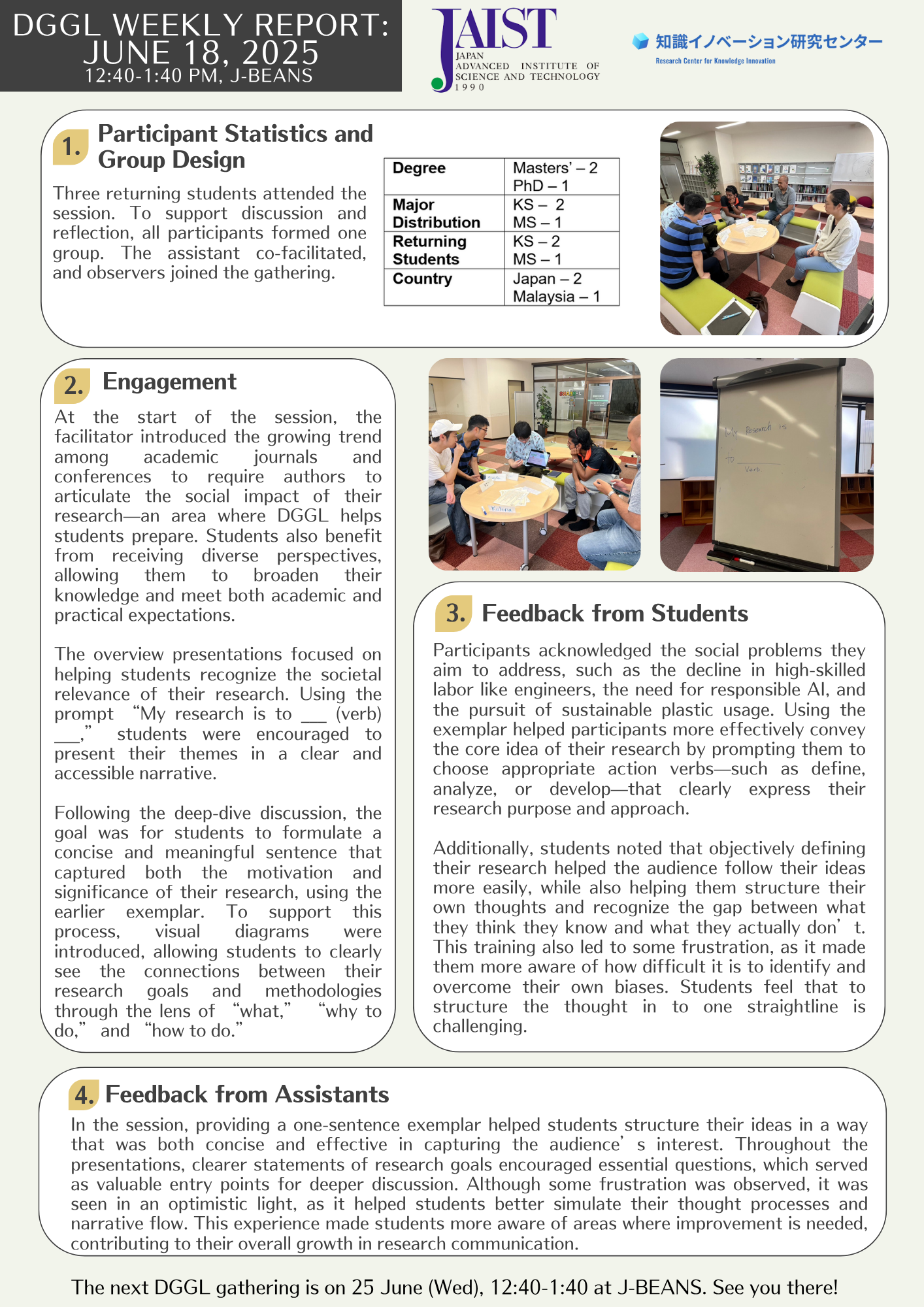

お知らせ news
お知らせ
🌱DGGLの活動報告|6月18日の様子を公開しました!/DGGL Activity Report|June 18 Session Now Available!🌱
🌱DGGLの活動報告|6月18日の様子を公開しました!/DGGL Activity Report|June 18 Session Now Available!🌱
6月18日のDGGLでは、3名のリピーター学生が参加し、アシスタントとオブザーバーを交えて1グループでの対話が行われました。
今回のセッションでは、近年の学術界で重視されている「研究の社会的意義を明示する」スキルに焦点を当てました。
ファシリテーターからは “My research is to ___(verb)___” という構文と、“what → why → how” の図式が紹介され、参加者はそれを用いて、自身の研究テーマを社会的課題と結び付けながら簡潔に説明する練習を行いました。
このプロセスでは、エンジニア不足、責任あるAIの開発、持続可能なプラスチック利用など、学生たちが自分の研究を通じて取り組みたい社会課題が共有されました。
「自分が知っているつもりだったこと」が、他者に説明しようとしたときに言葉にならない——そんなもどかしさと向き合うことで、自身の理解の深まりと改善点を見つけることにもつながりました。
今回のセッションを通して、明確な型(exemplar)を持つことが研究内容を伝える助けになること、研究は社会的文脈と接続してこそ他者に届くことが、改めて実感される機会となりました。
On June 18, three returning students gathered with an assistant facilitator and observers for a focused DGGL session.
The facilitator introduced two tools to help students clarify and communicate their research: the sentence prompt “My research is to ___ (verb) ___” and a “what → why → how” diagram. These tools encouraged students to connect their topics with real-world problems and frame their research in a concise and accessible way.
Students reflected on challenges like labor shortages in engineering, the development of responsible AI, and sustainable plastic use. Explaining their work within a social context helped uncover gaps in understanding and exposed underlying assumptions they hadn’t recognized.
The session highlighted two key lessons: first, that having a structured exemplar supports stronger research narratives, and second, that linking research to tangible social issues makes it more meaningful and impactful for both academic and public audiences.

